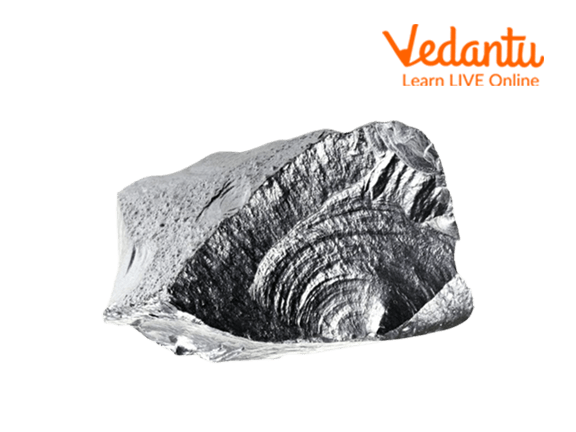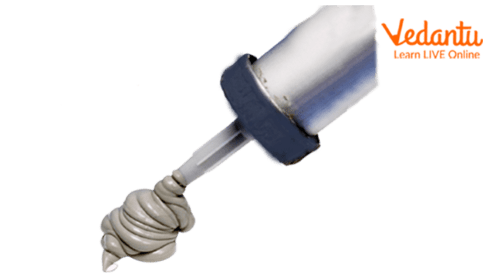




Overview of Silicon
The computer you are using to see these sentences is made of silicon, which is something to be grateful for. Silica, an oxide of silicon, is the most prevalent component of sand and is an integral part of microelectronics and computer chips. It also contributes to pleasant, white beaches.
According to the Royal Society of Chemistry, silicon is the second most plentiful element in the world after oxygen and the seventh most abundant element in the cosmos. Silicon makes up about 25% of the Earth's crust. In addition to being used in computer chips, silicone is used in various odd applications, such as menstrual cups, breast implants, and oven mitts. Let’s read more about silicon!
Characteristics and Properties of Silicon
The characteristics and properties of silicon are as follows:
In its crystallised form, silicon is an extremely brittle, hard, and generally inert metalloid with a distinct metallic sheen.
In nature, silicon mostly appears as oxides and silicates.
Oxygen, water, and most acids do not react with silicon in its solid form.
With halogens or weak alkalis, silicon reacts.
In addition, silicon has the unusual quality of expanding as it freezes, just like water.
In addition, four additional elements—gallium, bismuth, antimony, and germanium—expand when they are frozen.
Physical Properties of Silicon
The physical properties of silicon are as follows:
Pure silicon is a solid that is a hard, dark grey colour.
It exists in the solid phase.
Metallic sheen or glow known as lustre.
Silicon exists in two different allotropic states: a brown amorphous state and a dark crystalline state.
Alkalis and hydrofluoric acid are both soluble in silicon.

Silicon the Chemical Element
Silicon Element Uses
The uses of the silicon element are as follows:
Among the most beneficial components to humanity is silicon. The majority is used to create alloys, such as ferrosilicon and aluminium-silicon alloys (iron-silicon). These are used to deoxidise steel and to create machine tools, engine blocks, cylinder heads, and plates for dynamos and transformers.
Silicones are also produced using silicon. These are methyl group-attached silicon-oxygen polymers. Some products and hair conditioners contain silicone oil, a lubricant. Bathrooms and the areas surrounding windows, pipes, and roofs are sealed with silicone rubber to keep water out.
In the computers and microsystems industries, silicon is widely employed as a semiconductor in solid-state devices. Hyperpure silicon is required for this. To regulate its electrical characteristics, silicon is doped selectively with minute quantities of boron, gallium, phosphorus, or arsenic.
Complex silicates like granite and the majority of other rocks are utilised in civil engineering projects. Concrete and cement are made from sand (silicon dioxide or silica) and clay (aluminium silicate). Glass, which has countless uses, also primarily consists of sand. Ceramics used in high temperatures, enamels, and pottery all include silicon in the form of silicate.
Important abrasives known as silicon carbides are also utilised in lasers.

Silicones Made of Silicon
Facts About Silicon
Now, let’s learn some interesting facts about silicon:
1) The Latin word "silex," which means flint or a hard stone, is where silicon gets its name. Early in the nineteenth century, the element's name was changed from "silicium" to "silicon" to better align it with carbon and boron elements.
2) Silicon and silicone are not the same things, despite what some people may believe. A found natural element, silicon is listed as element 14 on the chemical elements. A multitude of uses utilise silicon, a synthetic material consisting of silicon-oxygen polymers.
3) Diamond, which is formed of carbon, the element that lies above silicon in the periodic table, has the same crystal structure as pure silicon.
4) Silicon is a grey and shiny solid when it is ultrapure. Silicon is a metalloid, despite having the appearance of a metal, and only conducts electricity under specific circumstances, making it a good choice for the electronics sector.
5) The second-most plentiful element in the earth's crust is silicon. The most prevalent substance in the earth's crust is silicon dioxide (SiO2), composed of silica.
Summary
In this article, we learned that silicon is a chemical element with the atomic number 14 and the non- to semi-metallic chemical symbol Si. It never occurs free but is present in practically all rocks, sand, clay, and soils in combination with oxygen in silica (silicon dioxide, SiO2) or even with oxygen and metal as silicate minerals. It is second to only oxygen in abundance in the Earth's crust. Many plants and even animals experience it.
We also learned that pure silicon has the same crystalline structure as diamond and is a hard, dark grey solid with a metallic lustre. With this, let’s wrap up the article about silicon element. We discussed almost everything about silicon, like its characteristics, properties, facts and so on.
FAQs on Interesting Facts About Silicon Element
1. What is silicon's primary source?
Sand. The most major element in the Earth's crust is silicon compounds. Sand is widely available, simple to mine, and generally simple to process.
2. Who in the world possesses the most silicon?
China. In 2019, China was expected to have produced 64% of the silicon materials used worldwide.
3. Is silicon the element that is most prevalent on Earth?
Silicate minerals make up over 90% of the Earth's crust, making silicon the second most common element.









